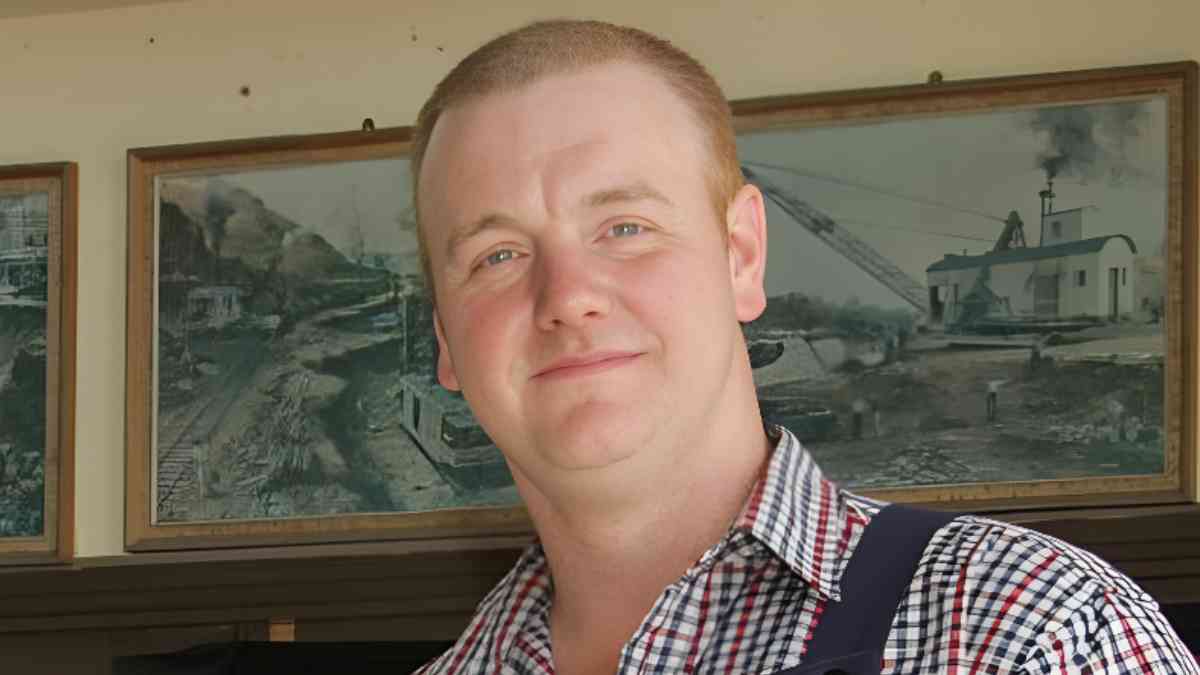Jack Dibnah: Carrying the Steam-Powered Legacy of Britain’s Industrial Heart

When your surname is Dibnah, steam and soot are practically woven into your DNA. Jack Dibnah, eldest son of the late steeplejack‐turned‐television icon Fred Dibnah, MBE, has spent the past two decades proving that passion for Britain’s industrial heritage did not end with his father’s final broadcast in 2004. Instead, Jack has taken up the spanners, welding torch, and rivet gun to write the next chapter of a story that began in the cotton mills of Bolton in the 1930s. His journey shows how one family’s devotion to coal-fired ingenuity still sparks imaginations in our digital age.
Table of Contents
ToggleA Childhood Framed by Brick Chimneys and Boiler Smoke
Born in Bolton, Lancashire, Jack grew up at a time when the town’s skyline—though already thinning—was still pierced by chimneys his father serviced or felled for a living. Weekends were rarely spent on football pitches; more often they involved clambering over traction engines, listening to the rhythmic hiss of injector valves, or watching Fred lower a Victorian chimney, brick by brick. That upbringing created a classroom without walls: Jack learned practical physics by feeling the bite of a cold chisel, and absorbed local history while helping fire an ancient mill engine that once drove hundreds of looms.
Just as significantly, he witnessed the respect his father commanded for doing dangerous work the old-fashioned way—standing on wooden ladders 200 feet in the air with little more than a flat cap and a rope for company. Those early memories forged not only an admiration for craftsmanship but also a sense of duty to keep Britain’s steam-age skills alive.
From Apprentice to Craftsman: Finding His Own Steam
Although the TV cameras naturally gravitated toward Fred, Jack was never merely a spectator. He mucked in on demolition sites, helped fabricate steelwork for boiler cladding, and absorbed the knack for reading a firebox “by ear.” Over time, he cultivated a particular fascination with small industrial locomotives—workhorses that once shuffled coal wagons at gasworks or clanked through factory yards out of public view.
After leaving school, he spent most of his free hours volunteering at heritage railways, feeding coal to Peckett saddle-tanks or repainting rusty frames with thick lead primer. The experience refined his metalworking abilities and introduced him to a nationwide network of preservationists who valued enthusiasm over pedigree. By his late twenties, Jack had acquired enough mechanical intuition to tackle a full locomotive overhaul—yet he kept a low profile, preferring workshop graft to television lights.
The “Witch” Arrives: A Once-Forgotten Locomotive in Dire Need
Opportunity knocked in 2020 when a forlorn Kerr Stuart 0-4-0ST “Witch” class locomotive (Works No. 4388, built 1926) came up for sale. The tiny saddle-tank had last steamed in 1999 and looked every one of its ninety-plus years: cracked firebox stays, wasted platework, and a water tank riddled with pin-holes. Where others saw scrap value, Jack saw potential—and crucially, a chance to practice every craft his father had championed: riveting, boiler smithing, and precision machining with nothing more sophisticated than a treadle drill in a home workshop.
Hauling the loco back to Bolton, he began a meticulous strip-down. Old boiler tubes were burned out; the saddle tank was removed and replaced with a newly fabricated steel one; motion pins were metal-sprayed and re-machined; and the tired cab was rebuilt in the same riveted style Kerr Stuart apprentices would recognise from almost a century earlier. Costs rose, but camaraderie blossomed: local engineers donated lathe time, and heritage rail volunteers spent winter evenings scraping cylinder ports.
Inside the Workshop: Traditional Skills Meet Modern Know-How
Watching Jack at work is to glimpse a rare blend of vintage technique and twenty-first-century problem-solving. Where possible, he prefers period methods: caulking seams with a pneumatic hammer, heating rivets to yellow heat in a coke forge, and fitting them while the metal still glows. Yet he also embraces laser cutting for replacement boiler flanges, ultrasonic testing for plate thickness, and digital callipers to achieve tolerances unimaginable to a 1920s shop floor.
The ethos is simple: conserve the past, but don’t refuse tools that make preservation safer or more reliable. That mindset echoes Fred’s own “backstreet mechanic” mantra—do whatever works, provided the finished job is sound and honest.
First Steam and a Royal Seal of Approval
June 2022 saw a milestone that heritage forums buzzed about for weeks: No. 4388 emitted its first proper exhaust beat in over two decades at the Foxfield Railway in Staffordshire. Soot-streaked volunteers cheered as the little loco shuffled down the line, pressure gauge steady at 150 psi, safety valves lifting crisply. Photographs went viral in preservation circles, and word reached the National Transport Trust.
In 2024, Jack received the Trust’s President’s Award, presented by HRH The Princess Royal, for exemplary restoration work that “embodies the spirit of industrial heritage.” The citation praised not just the mechanical excellence but also the educational value—Jack had documented every step, inspiring fledgling engineers who discovered the project on social media.
Beyond the Footplate: Sharing Knowledge with a Wider Audience
Though Jack shuns celebrity, he understands the power of storytelling. He has appeared in regional news segments, steam-rally Q&A sessions, and a pilot documentary tentatively titled “The Dibnah Boys.” The programme captured him and his brother Roger reviving traction engines while riffing on their father’s catchphrases in the familiar Bolton accent. The broadcast reminded viewers that the Dibnah name stands not for nostalgia alone—but for graft, grit, and a respect for artisans who built the modern world.
Away from cameras, Jack runs occasional boiler-making workshops, demystifying tasks such as stay replacement or setting a fusible plug. Participants leave smeared in grease and wearing smiles that rarely accompany virtual tutorials. That hands-on tuition ensures techniques survive another generation, something no textbook can guarantee.
Catalysing a Broader Revival: Economic and Cultural Benefits
Heritage railways contribute more than charm; they attract tourism, sustain engineering apprenticeships, and anchor community identity. Jack’s locomotive now stars in Victorian reenactment weekends that bring hundreds of visitors—and their wallets—to rural Staffordshire. Nearby cafés report record Saturdays when “Witch” is rostered, while local colleges arrange field trips so students can see thermodynamics unfold outside a PowerPoint slide.
By proving that small industrial locos can be crowd-pleasers, Jack has encouraged other owners to resurrect humble saddle-tanks once written off as non-glamorous. Operations managers note that compact engines drink less coal, put less strain on lightly laid track, and offer footplate trainees a forgiving introduction to firing. The ripple effect spreads: fabricators receive orders for chimney castings, foundries pour fresh cylinder liners, and a new supply chain for heritage components takes root.
Challenges on the Horizon—and a Vision for the Future
Preservation is never finished. Boiler certificates expire after ten years, steel corrodes even under perfect paint, and coal prices fluctuate wildly. Jack therefore balances celebratory whistle blasts with sober planning: setting aside funds for future re-tubing, experimenting with blended biomass briquettes to curb emissions, and lobbying for apprenticeships that cover riveting and lathe work rather than only CNC programming.
His next ambition circles around a rusting Lancashire & Yorkshire saddle-tank rumored to need a full frame swap. Most would consider it beyond salvation, but Jack’s guiding principle remains, “If someone built it with hand tools and sweat the first time, we can build it again.” That outlook resonates with young volunteers who crave purpose beyond screen time.
Why the Story Matters in 2025 and Beyond
Britain’s industrial heritage risks fading into memory as once-noisy mills become luxury flats. Yet climate challenges demand engineers who understand energy efficiency at its most fundamental—steam principles still teach lessons about pressure, lubrication, and material stress. Jack’s workshop shows these concepts in motion: you can see an injector lifting feed-water or feel the vacuum as a blastpipe oscillates. This visceral education complements modern curricula focused on coding or mechatronics.
Moreover, Jack’s accessible, down-to-earth persona punctures the stereotype that heritage is elitist or solely academic. He welcomes anyone prepared to roll up their sleeves, whether they arrive in work boots or trainers. That inclusivity mirrors his father’s gift for turning complex engineering into gripping television without dumbing it down.
Conclusion: Keeping the Boilers Lit
Jack Dibnah has never chased fame, yet his contribution to Britain’s living history is already significant. From coaxing a 1920s saddle-tank back to life, to earning national accolades, to mentoring tomorrow’s boilermakers, he embodies the belief that heritage is best preserved by using it. Every time No. 4388 puffs past a crowd of wide-eyed children, the clangour of the Industrial Revolution echoes a little louder—and the legacy of both Fred and Jack Dibnah rolls proudly into the future, pistons chuffing, safety valves singing, and a flat cap tipped respectfully to the past.



